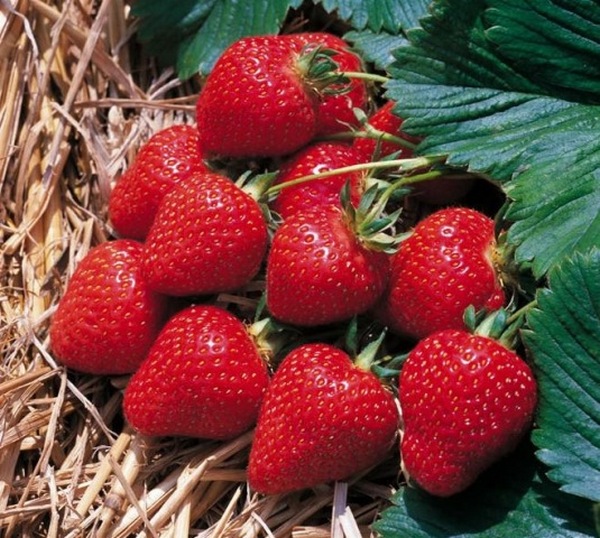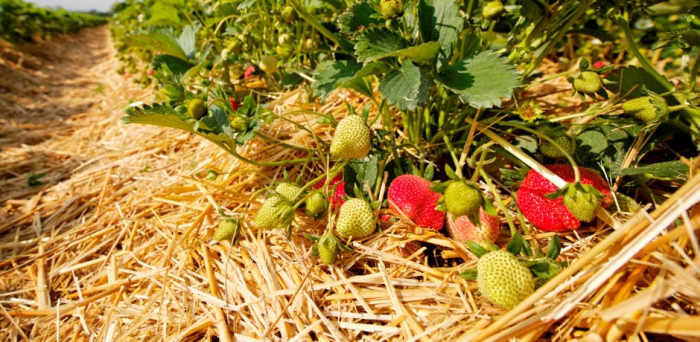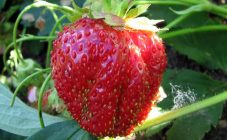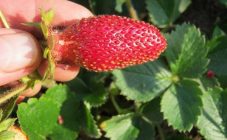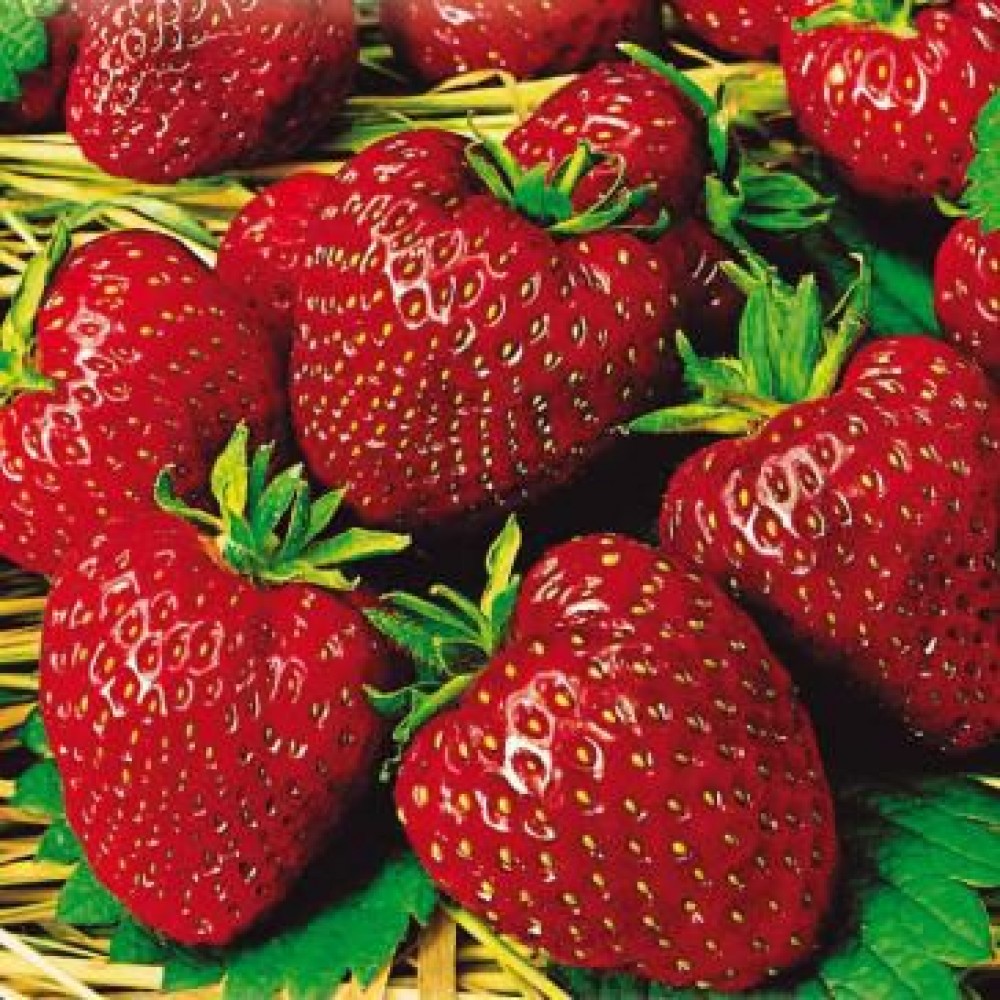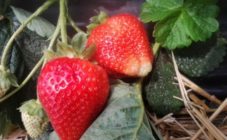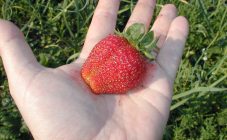Content:
The strawberry garden berry is one of the most beloved delicacies that invariably attract both adults and children. For this reason, most gardeners try not to forget about this culture when decorating garden beds and usually choose its large-fruited variety. Strawberry Favorit, which is distinguished by an abundance of large and juicy fruits, collected throughout the entire growing season of the plant (from mid-spring to autumn), can also be attributed to this species.
The strawberry variety called Cambridge Favorite was bred in the island of England at the end of the last century. It has an enviable yield, which is usually achieved due to the high yield of the crop in combination with the large dimension of the berries themselves.
A distinctive feature of this culture is the special arrangement of ripening flowers and fruits that grow strictly at the foliage level. This position of flowering products contributes to better protection of the berry from birds and earth parasites.
Description
In order to characterize this plant as a type (another name for the culture is Venta strawberry), it will be necessary to note the following special features:
- The bushes are relatively low, with medium spreading.
- The foliage on them is rather large, light green in color.
- Peduncles are of sufficient thickness and are located approximately at the level of the leaf dome.
- The inflorescences of the plant are multi-flowered, not very large in size.
- The flowering period is very long, lasts almost until the beginning of fruiting.
Regarding the fruits of the Favorite strawberry, the description of which is supposed to be read in the future, suffice it to say that they are quite large and have a specific wide-conical appearance.
Their size can be judged by the fact that usually on the palm no more than 2-3 berries fit... All specimens of this variety have a perfectly round shape (with a slight conical point at the end). Their deep red color with a slightly noticeable gleam gives the fruit an amazingly attractive appearance. The characteristics of the plant presented here will be incomplete if the following details are not noted:
- The berries of the variety are distinguished by dense pulp, which guarantees their good preservation during long-term storage and transportation.
- The taste of the fruits of the plant will appeal to most true connoisseurs of this type of sweetness, which is a garden strawberry.
- In addition, the Cambridge Favorite strawberry variety description presented in this section is resistant to most garden diseases.
Due to the low frost resistance of strawberries, experts advise growing this variety mainly in warm regions (in the Krasnodar Territory, for example). However, there are always enthusiasts of their business who manage to breed it in the northern regions. Gardeners from these regions cover the berries with a thick layer of straw to prevent freezing during conservation for the winter.
Agrotechnics
Vegetation process
Strawberry Cambridge successfully develops and bears fruit on almost any soil composition. In this case, the types of crops that were grown on them earlier are necessarily taken into account. Some amateur gardeners recommend that, for preparing the soil, about a year before, to grow on this place crops such as wheat or rye.
How to prepare the soil
This strawberry variety is completely undemanding to the quality of the soil, however, preference is still given to well-prepared (pre-treated) areas. Such processing usually boils down to the following operations:
- The beds for planting are carefully dug up in advance, after which they are cleared of weeds and mixed with special fertile additives.
- For this, up to 10 kg of compost or manure is applied per unit area of the garden plot, to which about 50 grams of azofoska is added together with a glass of wood ash.
- Upon completion of these operations, the soil is again loosened to a depth of about 20-25 cm.
Disembarkation methods
There are several known ways that you can successfully plant seedlings in the garden. It:
- The standard approach in which they are located in two (three) lines. In this case, gaps of about 50 cm are left between the rows, and the seedlings are removed from one another by about 25-30 cm.
- The second option involves placing them on a bed slightly raised above the general ground level.
- Finally, according to the third method, the seedlings are planted using the so-called carpet method.
The choice of one or another landing option is determined by the preferences of the site owner and the characteristics of the soil at the place of work. So, if in the area where it is supposed to grow strawberries, the groundwater is too close, it is best to equip the beds slightly raised above the ground.
When moving to the direct planting of young bushes, it is necessary to do the following operations:
- In order to obtain even rows, first of all, you should pull the string between the two pegs, which marks the planting line.
- After that, holes are made along the markings in the ground (to a depth of about 12-15 cm).
- Fertilizers are then added to each of them (a spoonful of azophoska and wood ash), after which they are abundantly spilled with water.
- Now you can proceed to planting bushes, the roots of which should be placed in the hole without any effort (freely).
Upon completion of all these operations, the soil around the planted plant is carefully compacted, but not so much that the seedlings settle into the holes (they must remain on the surface of the ground). At the final stage of work, each bush is separately spilled with water (this will require at least one liter).
Plant care
Constant care of any strawberry is the key to getting a good harvest. In this case, when organizing it, the following rules are followed:
- Remove weeds that clog the soil around the plant, as well as loosen it regularly and in a timely manner.
- Watering should be carried out according to the same system (at intervals of every 2-4 days).
- For growing sprouts, soil mulching is mandatory, which helps to retain moisture and protect plant roots from the summer heat. It is recommended to use nutritional supplements and garden waste as mulch (they are selected from the standard set used for any garden plants).
We add to this that every 3-4 seasons for a given strawberry variety it is necessary to change the place of planting, which contributes to an increase in its resistance to garden diseases.
Since this species is not adapted to severe frosts, with the arrival of winter, it is advisable to cover the bushes with straw or spruce paws.
Top dressing and disease prevention
The most suitable fertilizer for fertilizing is considered organic, including compost, mullein, humus, or bird droppings. In addition, about 6-7 days after the transfer of seedlings to unprotected soil, the bushes should be sprinkled with wood ash. At the end of the bait, the soil is poured abundantly and thoroughly loosened.
These procedures are carried out several times per season, while their terms are set in the following order:
- The first application is carried out in early spring, immediately after the removal of last year's leaves.
- The second procedure is tied to the time of the appearance of the buds (peduncles).
- The last feeding is carried out at the end of fruiting.
In order to protect strawberry plants from pests, with the arrival of spring, their bushes are treated with a weak solution of potassium permanganate. As soon as the first small buds begin to form, you will need to start applying the bait in the form of an iodine solution (half a teaspoon in a bucket of clean water). Thanks to this treatment, it is possible to protect the plant from weevils and gray rot.
To speed up the flowering process, sometimes strawberry bushes are treated with a boric solution prepared at the rate of a pinch of boron per 10-liter bucket of water. To avoid the spread of putrefactive phenomena, the soil around the bushes is mulched with hay or straw.
All this is true only if it is introduced before the first flowers appear.
Advantages and disadvantages
Based on everything described, the advantages of the Cambridge variety include:
- High yield, as well as gigantic sizes of ripe berries.
- Long periods of fruit ripening, extended for almost the entire gardening season.
- Excellent taste, in no way inferior to selected varieties of strawberries.
- The ability to long-term storage, which, together with a high yield, makes it possible to grow these berries for commercial purposes.
In the final part of the review, we note that, with the exception of the low frost resistance of the Cambridge strawberry, it is generally assessed positively. This circumstance makes it possible to cultivate this crop in any required volume (not excluding the option of production for sale).
